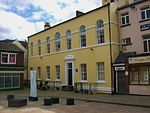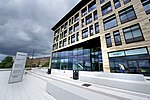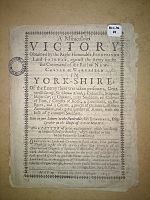Wakefield (UK Parliament constituency)
Constituencies of the Parliament of the United Kingdom established in 1832Pages with disabled graphsParliamentary constituencies in Yorkshire and the HumberPolitics of WakefieldUse British English from November 2019

Wakefield is a constituency created in 1832, represented by Simon Lightwood of the Labour Party since 2022. The seat is due to be abolished for the next general election.
Excerpt from the Wikipedia article Wakefield (UK Parliament constituency) (License: CC BY-SA 3.0, Authors, Images).Wakefield (UK Parliament constituency)
Bull Ring, Wakefield Eastmoor
Geographical coordinates (GPS) Address Nearby Places Show on map
Geographical coordinates (GPS)
| Latitude | Longitude |
|---|---|
| N 53.683 ° | E -1.499 ° |
Address
The Lockwood
Bull Ring 14
WF1 1HA Wakefield, Eastmoor
England, United Kingdom
Open on Google Maps











